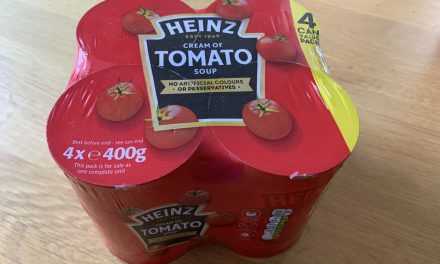The word ‘cleaning‘ is enough to turn many of us off, yet it’s an important process for soup makers, and knowing how to complete the routine of clearing out the debris after use is half the battle won.
On this page, we’ve got some simple tips to get more life out of your humble soup maker, meaning that you may very well get better tasting soups and a longer lasting machine too.
Contents
Read The Manual
We know it’s a boring answer, but the best possible way to know what you’re doing is to read the manual. They’ll certainly deliver you with some bad news, most frequently that you can’t cut corners. For example, unless you’ve got a specifically designed model, don’t put the whole thing in the dishwasher. Some models will allow you to put parts in the dishwasher, usually on the top shelf only. If your manual says you can’t, or says nothing about it, don’t be tempted and make sure to hand wash it instead.
Also look out for guidance about abrasive cleaning methods too – generally this means no scouring pads, especially on the wiry, rough side. While you might get away with the softer, spongy side of a scouring pad, it’s easy to accidentally press hard and make contact with the scratchy side, so better not to risk it.
Some Simple Soup Maker Cleaning Tips
So, that’s what you shouldn’t do, how about what you should do?
There’s some simple rules to follow that we’ve covered fleetingly in our reviews, but let’s go over them one by one here as a reference.
Wipe Down After Cooking
Anyone who is familiar with washing up knows that it’s easier to clean soft residue from crockery and pots and pans than it is when they’ve gone rock hard after sitting out in the air for hours after cooking. The same goes for soup makers (and soup pans, food flasks and everything else for that matter).
If you can’t clean them immediately as you serve, at the very least give them a quick wipe with a warm, soapy cloth before leaving it to cool. That will mean there’s far less to get welded to the side while you’re eating, blissfully unaware of the concrete-esque mess that’s forming for you to deal with later. Better still, after wiping give it a good rinse out, as the less that’s left in the soup maker the better when you come back to it to finish the job.
Dealing With Disaster
OK, we’re being a bit melodramatic with that sub heading, but if you do forget to clear the worst before it goes hard, don’t panic. As we said a moment ago, certainly resist the temptation to reach for the scouring pad as scrubbing at it might shift some or even all of the lumps stuck to the side, but it might also make the non stick surfaces less, well… non stick! Just like your pans have a useful Teflon coating to prevent sticking and make cleaning easier, the inside of most soup makers is designed to be non stick too.
Try filling the chamber of the soup maker with warm, soapy water, and leaving it for a while. That should at least soften what’s stuck, and allow you to wipe it away with a soft dish cloth. It may be a case of rinse and repeat (literally!) several times until it’s either clean or you’re making no further progress.
If you’re really stuck, you can try running a soup making cycle with warm water – then try the soap water again and see if things improve.
The Soupy Summary
To summarise, you want to be cleaning your soup maker at a time that doesn’t need a lot of elbow grease. Cleaning should be a case of simple wiping around inside the jug of the machine and rinsing. If you’ve fallen victim to laziness or forgetfulness and have left it too long to be able to easily be cleaned, avoid the scrubbing and use the method above instead. Careful and disciplined cleaning will help the longevity of your soup maker to stretch for years into the future.





